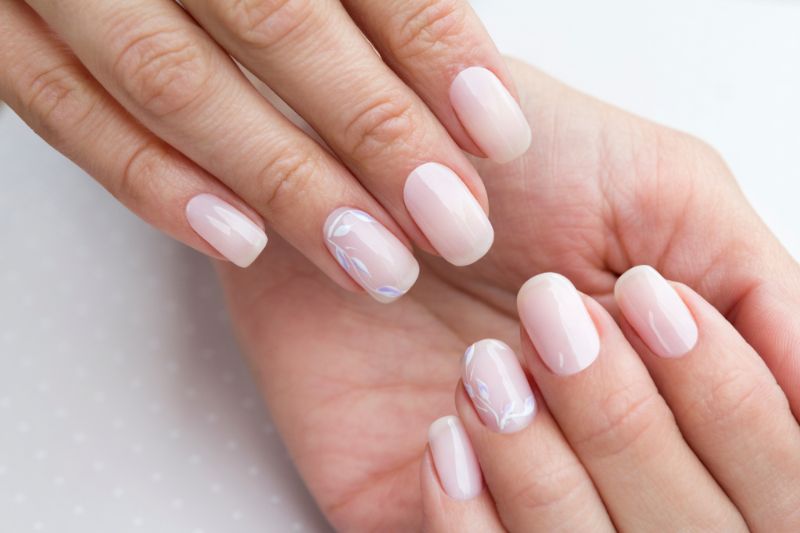Nail growth might seem like a simple, natural process, but there's a fascinating and intricate science behind it. For many people, having long, strong nails is a beauty goal, yet achieving this can be a challenge. Understanding the factors that influence nail growth and how to optimize them can help you achieve healthier, faster-growing nails. This post delves into the anatomy of nails, the biology of nail growth, and practical tips to speed up the process.
Anatomy of a Nail
To understand nail growth, it's essential to start with the basics of nail anatomy. A nail consists of several parts, each playing a crucial role in its formation and health:
- Nail Plate: The visible part of the nail.
- Nail Bed: The skin beneath the nail plate.
- Cuticle: The tissue that overlaps the nail plate at the base.
- Lunula: The white, half-moon shape at the base of the nail plate.
- Matrix: The hidden part of the nail, under the cuticle, where new nail cells are produced.
The Biology of Nail Growth
Nail growth begins in the matrix, located under the cuticle. The matrix is a bed of living cells that reproduce to form new nail cells. These cells then harden and move forward to become the nail plate. This process is called keratinization, where cells fill with keratin, a tough, protective protein also found in hair and skin.
On average, fingernails grow about 3.5 millimeters per month, while toenails grow about 1.6 millimeters per month. However, this rate can vary based on several factors, including age, health, and environmental influences.
Factors Affecting Nail Growth
Several factors can influence the rate of nail growth, both positively and negatively:
- Genetics: Just as genetics play a role in hair growth, they also affect nail growth. If your parents had fast-growing nails, you might too.
- Age: Younger people tend to have faster-growing nails. As we age, the growth rate slows down.
- Diet and Nutrition: A balanced diet rich in vitamins and minerals, particularly biotin, zinc, and iron, is crucial for nail health and growth.
- Health Conditions: Conditions like thyroid disease, fungal infections, and anemia can impact nail growth.
- Hormones: Hormonal changes during pregnancy, menstruation, and menopause can affect nail growth.
- Injury: Trauma to the nail or nail bed can hinder growth.
How to Speed Up Nail Growth
While you can't completely override genetics and certain health conditions, there are several ways to support and potentially speed up nail growth:
1. Maintain a Balanced Diet
Nutrition plays a significant role in nail health. Incorporate the following nutrients into your diet:
- Biotin: Also known as vitamin B7, biotin strengthens nails and promotes growth. Sources include eggs, nuts, seeds, and sweet potatoes.
- Protein: Nails are made of keratin, a protein. Ensure adequate protein intake from sources like lean meats, beans, and legumes.
- Zinc: Essential for cell growth and division. Find zinc in foods like meat, shellfish, and legumes.
- Iron: Critical for oxygen transport to nail cells. Sources include red meat, leafy greens, and beans.
- Omega-3 Fatty Acids: Found in fish, flaxseeds, and walnuts, these fats help maintain nail moisture and prevent brittleness.
2. Stay Hydrated
Dehydration can lead to dry, brittle nails. Drinking plenty of water keeps your body and nails hydrated, promoting healthy growth.
3. Take Supplements
If your diet lacks specific nutrients, consider taking supplements. Biotin supplements, in particular, are known to improve nail strength and growth.
4. Practice Good Nail Hygiene
Keeping your nails clean and trimmed prevents infections and promotes healthy growth. Here are some tips:
- Trim Regularly: Regular trimming prevents breakage and encourages growth.
- Moisturize: Use hand lotion and cuticle oil to keep nails and cuticles hydrated.
- Avoid Harsh Chemicals: Minimize exposure to harsh chemicals like acetone and detergents, which can weaken nails.
5. Avoid Nail Trauma
Physical trauma can damage the nail matrix, hindering growth. Be gentle with your nails, avoid biting them, and use tools properly.
6. Use Protective Gloves
Wearing gloves while doing chores, such as washing dishes or gardening, can protect your nails from damage and chemical exposure.
7. Massage Your Nails
Massaging your nails and cuticles can increase blood flow to the area, promoting nail growth. Use a nourishing oil like olive or coconut oil for added benefits.
8. Consider Topical Treatments
Some over-the-counter treatments contain ingredients like biotin, keratin, or collagen, which can strengthen nails and support growth. Apply these treatments as directed.
9. Maintain Overall Health
Healthy nails are often a reflection of your overall health. Manage stress, get regular exercise, and ensure adequate sleep to support nail growth.
Myths and Misconceptions About Nail Growth
There are several myths about nail growth that can mislead people. Let's debunk a few:
- Myth 1: Cutting nails makes them grow faster: Trimming nails keeps them healthy and prevents breakage but doesn't speed up growth.
- Myth 2: Gel and acrylic nails help nails grow: While they can protect nails from breaking, overuse can weaken the natural nail.
- Myth 3: White spots indicate a calcium deficiency: These spots are often due to minor trauma, not a lack of calcium.
When to See a Doctor
If you notice any unusual changes in your nails, such as discoloration, thickening, or separation from the nail bed, it’s essential to consult a healthcare professional. These changes can indicate underlying health issues that need attention.








0 Comments